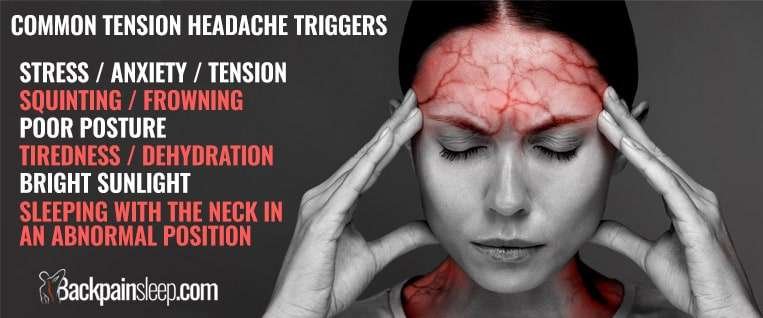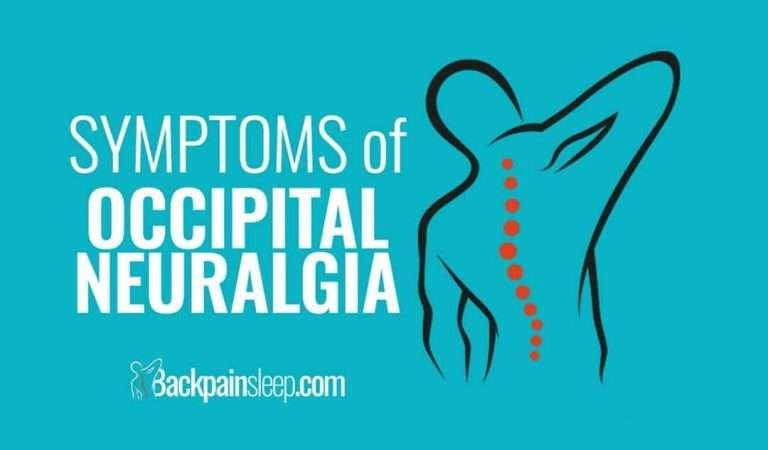The most characteristic symptoms of occipital neuralgia are a relentless throbbing or pulsing pain that shoots from the base of your skull and surges upwards over the scalp and often into the back of one or both eyes. In our experience, the pain is usually preceded by a feeling of building pressure similar to thumbs being pushed in at the skull base. We find text neck symptoms are also a trigger.
Symptoms of Occipital Neuralgia
The pain can affect one or both sides and be horrendously painful. The slightest movement may trigger further pain, like gently touching the top of your scalp. Sufferers often relate the pain to migraine.
Occipital neuralgia is when the occipital nerves, a group of nerves that arise from the C2 and C3 spinal nerves, are damaged or inflamed. This can result in unbearable pain, throbbing, piercing and sending shock-like pain to the head, base of the skull and into the eye. These are classic occipital neuralgia symptoms.
Causes of Occipital Neuralgia
Muscle tightness in the neck, pinched nerves or a head or neck injury can lead to occipital neuralgia pain. Very rarely are occipital neuralgia episodes attributed to an underlying disease.
Several issues may cause symptoms of occipital neuralgia pain, but the most common cause of occipital head pain is long-term neck tension from poor posture when sitting or sleeping. These should be an initial focus when looking for occipital neuralgia pain relief… and that form of tried, tested, and trusted relief is self-massage.
When to See a Doctor
Occipital neuralgia can be very tough to diagnose as it shares symptoms with other headaches like migraines or cluster. If you start to experience unusual throbbing pain in the neck, head or scalp, and the pain isn’t accompanied by recognized migraine symptoms like nausea or light-sensitivity… go and see your doctor.
Testing & Diagnosis
Diagnosis is difficult as there is no definitive test to reveal a positive or negative diagnosis. Usually, a physical checkup and neurological exam will be done to look for irregularities. If these examinations are indecisive, your doctor will likely request further tests such as an MRI or CT scan to rule out other possible causes of the pain.
Treating Occipital Neuralgia
The goal of treatment is to stop or significantly reduce the pain. Treatment can be surgical or non-surgical. Finding the best way to sleep with occipital neuralgia will go a long way to helping you live with the condition. Once the symptoms have been identified you can take positive steps towards managing and relieving the condition.
Non-invasive treatments
- Heat can ease the pain when applied carefully. Not too hot! Handy heating pads can be purchased at a store or online.
- Massage therapy.
- Oral Medication:
- Anti-inflammatories
- Muscle relaxants
- Anticonvulsants
- Percutaneous nerve blocks: these injections are typically used to diagnose and treat the disorder.
- Botulinum Toxin (Botox) Injections: Botox injections are used to decrease nerve sensitivity and inflammation.
Surgery
- Occipital Nerve Stimulation: Working the same way as spinal cord stimulation and includes the placement of electrodes near the occipital nerves. It’s minimally invasive, and the stimulus does not damage the surrounding nerves.
- Spinal Cord Stimulation: this treatment places stimulating electrodes between the spinal cord and vertebrae that produce electrical impulses to prevent pain messages from traveling from the spinal cord to the brain.
Conclusion
For those of us who regularly suffer, we have no choice but to learn to live with it (if surgery is not an option), identifying triggers and avoiding them like the plague goes a long way to managing this very painful and debilitating condition.





